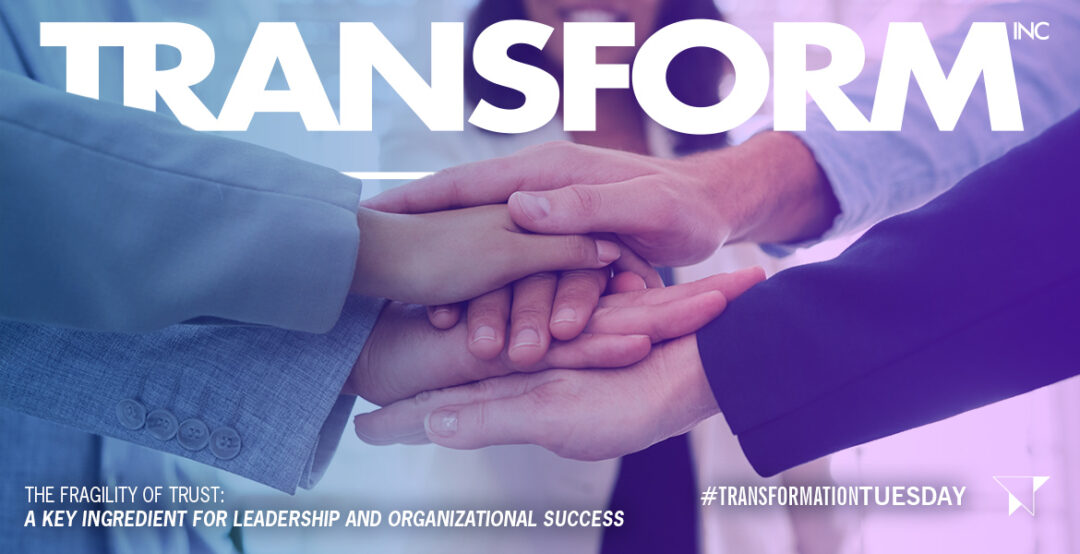Trust is one of those things in leadership and organizational culture that is incredibly fragile. It’s something great leaders intentionally work to build over time, yet it can be shattered in an instant. It’s not just a buzzword; it is a leader’s secret sauce for fostering collaboration and driving results.
Let me share some eye-opening stats with you. Studies show that there’s a significant difference between high-trust and low-trust organizations. For instance, Gallup found that companies with high employee engagement—often a reflection of trust—see a whopping 21% boost in profitability, 17% higher productivity, and 41% lower absenteeism rates. In contrast, low-trust organizations face high turnover rates and employee dissatisfaction, creating a toxic work environment. A MIT-Sloan survey found that “trusting employees are 260% more motivated to work, have 41% lower rates of absenteeism, and are 50% less likely to look for another job. We also found that roughly 1 in 4 workers don’t trust their employer. At the same time, most employers overestimate their workforce’s trust level by almost 40%.” It’s clear: trust isn’t just a warm and fuzzy feeling; it’s a critical driver of business success.
What I’ve learned over the years is that trust can be easily undermined. Did you know it takes just 7 seconds for someone to form an initial judgment about your trustworthiness? That’s wild! Small actions—like a dismissive gesture or even a lack of eye contact—can create lingering perceptions of distrust. I’ve been guilty of this, too. A simple miscommunication can lead to misunderstandings that last longer than intended.
It’s not just leaders who impact trust in an organization; employees, vendors and subcontractors who act on behalf of a company, do as well. As leaders, however, we set the example and must be mindful of our behaviors and how they impact those around us. Even the smallest expressions, whether verbal or non-verbal, can greatly influence how others perceive our trustworthiness and commitment.
So, how do we create a high-trust organization? From my experience, I’ve noticed that successful organizations implement specific practices that really contribute to high trust and, hence, a strong workplace culture. Here are a few strategies that I’ve found effective:
- Open Communication: High-trust organizations prioritize transparency. Leaders encourage team members to share their thoughts and ideas, creating an atmosphere where everyone feels heard. When working with our clients we always ask at the end of the meeting, “What needs to be communicated out?” to ensure that information from leadership is frequent, transparent, and clear. Likewise, we encourage jam sessions or town halls where employees can provide feedback and discuss concerns with leadership.
- Empowerment and Autonomy: Trust grows when employees feel empowered to make decisions, manage their workload, and tap into others when guidance is needed. We call this self-directed performance. Employees who feel empowered and are given the appropriate level of autonomy to perform successfully step up, think like owners, and assume responsibility for their performance.
- Recognition and Appreciation: High-trust organizations celebrate their employees’ contributions. As an organization, Google has some fantastic programs in place to recognize achievements, which really fosters a culture of appreciation and reinforces trust.
- Consistent Follow-Through: Trust is built on reliability. There is no question that when leaders follow through on their commitments, it builds credibility. This consistency demonstrates accountability to the team and strengthens trust.
- Investing in Relationships: Leaders in high-trust organizations take the time to build relationships with their teams. They engage in one-on-one conversations, check in regularly, and show genuine interest in employees’ well-being.
If we asked your employees what level of trust they have in the leaders in your organization, what would they tell us?
What are the leaders in your organization consistently doing to build trust?
The statistics speak for themselves: organizations that prioritize trust cultivate a positive workplace culture and achieve greater success. If you don’t have or know the answers to the two questions above, give us a call and we’ll help you assess and then create actions to foster or strengthen a culture of trust and accountability. Because in the end, trust isn’t just good for business—it’s essential for creating a thriving workplace, and everyone wants that!
Theresa Gale
Principal




